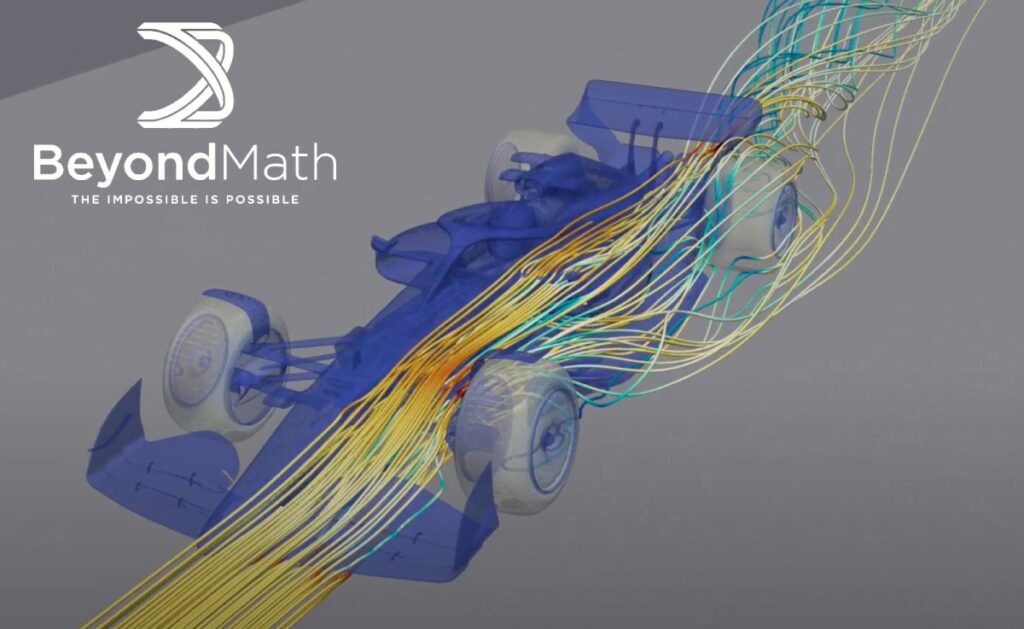Simulating the real world is a tremendously complex problem if you want to do it at any useful level of fidelity. Traditional techniques are holding back design teams at vehicle and aerospace companies, but Beyond Math is putting AI on the task with a new way of simulating the world that could save them days or weeks of waiting.
“Unlike language, where we don’t have mathematical models to describe what the next word should be, when it comes to physics, we do have those models. And what we’re seeing is that machine learning is actually quite good at computation, not just pattern recognition,” said co-founder Darren Garvey.
The field in which Beyond Math is taking its first strides is called computational fluid dynamics (CFD), and it’s been around about as long as computing has. The equations that govern how an object moves through air or water, or air around an object are fiendishly complex. So while we’ve continually improved our ability to predict, say, the way air flows over a wing, we’re still nowhere near perfect — and what we can do takes so much computational power that it’s limited to supercomputers and GPU clusters.
The result is that the design process in industries like cars, planes, and boats involves a lot of wait time.
“For a designer, they put a lot of thought into what might work, then they run a simulation. Then they come in the next morning and they’ve got the results. Either it did what they wanted or not, and they have to go through this loop a few more times. Then you take it to the wind tunnel,” Garvey said — and the wind tunnel may well not agree with the simulation, so it’s back to the drawing board.
Beyond Math’s goal is to accelerate the digital design side, which means shortening the delay between having an idea and finding out whether it is likely to work.
“They’re saying, if I make this design change, will it make my car more fuel efficient? Imagine you’ve got six months to design a part for a plane. Given that a simulation takes so long, you might get 20 attempts to try things out. But if a designer thinks of an idea and gets results within seconds or a couple of minutes, in that same six months you might be able to run a million changes,” said Garvey.

And it’s increasingly looking like machine learning, as opposed to just more GPUs running the same old equations, is the way to do that. Their first product is a “digital wind tunnel” that provides near-real-time simulation of airflow over a complex surface at a fidelity that would normally take hundreds of times as long.
We’ve seen something like this in scientific literature, where a model of a weather system can be effectively approximated in a fraction of the time, using a machine learning model trained on thousands of hours of simulations and observed patterns. But Beyond Math doesn’t have the luxury of a pre-existing training set.
“There’s just not a lot of simulation data out there — we don’t have the whole internet to train off of, like the LLMs. So how do you get something that’s equivalent to what designers are using, that works on these very complex geometries, as a startup?”
Surprisingly, the answer they’ve found is not to rely on simulations, but rather to have a model that understands the theory behind something like a wind tunnel, as well as the observed reality of that theory.
“We’re not trying to approximate the simulations, we’re trying to approximate the real world,” Garvey said. “And you have to bring in real world data to do that.”
Once the model understands how a system behaves, it can also be an active participant in design, a possibility many engineers have already begun to explore in other domains. Garvey compared it to image understanding: there, too, machine learning models had to walk before they could run, but once they were adept at analyzing an image, it was an intuitive next step for them to generate one.
Among Beyond Math’s first markets is Formula 1 racing, where some unnamed teams are exploring using the software to speed up their aerodynamics and vehicle design processes.
“They’re one of the heaviest users of CFD, and they’re fast-moving, they’ll adopt new technologies. We’ve been working closely with a couple F1 teams, doing a lot of evaluation and understanding their core problems. We’re close to having a platform that will actually make their cars faster,” Garvey said.

In fact, he expressed hope (with the usual warning that there was no guarantee) that within six months “we’ll be able to show that customers are benefiting from these models, and they’ve gone out of research and proofs of concepts into things that have real impact.”
New funding should help make that happen: Beyond Math just raised an $8.5 million seed round led by UP.Partners, with Insight Partners and InMotion Ventures participating.
The startup expects to double its team size and scale up its compute; they’re buying Nvidia DGX 200s and working with the chip giant on this interesting new application of its ubiquitous compute hardware.
Though the highly competitive, deep-pocketed F1 racing community is certainly a good customer to have, Beyond Math is thinking about its next steps.
“We’re seeing a lot of success in our customers’ design space, but it’ll be a journey from that to something more generalizable. For example, if a model understands cars, or car-like objects, it’s not necessarily going to understand a plane, or a blood vessel,” Garvey said. “But that’s that’s the classic startup dance — you have to find your path to traction before you have the runway to expand. As a business we’re focused on these top-tier customers so they can help bootstrap the company.”


